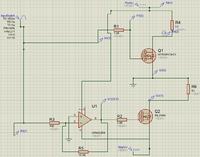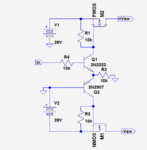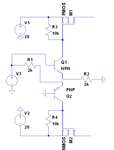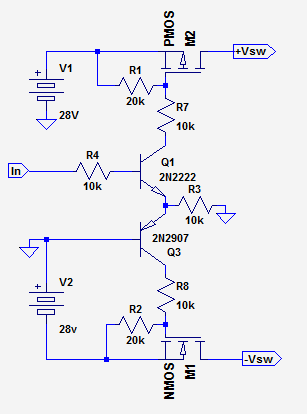helium4amc
Newbie level 2
Hi all, this is my first post here, but the boards have been extremely useful over the years!
I am running a test in which I need to switch positive and negative power lines on simultaneously, which will be in the range +/-13 V to +/-28 V. I would like to drive the switches with a single 5 V input (from an Arduino). The test units will draw ~350 mA from each supply (although the current drain on positive and negative is not quite the same).
My first thought was to use a couple of MOSFETs, but I have played around in Proteus and can't get them to both switch (my experience with them is pretty small).

I am open to any suggestions for ways of doing this and would love to know why my circuit above isn't working (apart from the obvious fact that I clearly have no idea what I am doing!).
Thanks in advance!
Andrew
I am running a test in which I need to switch positive and negative power lines on simultaneously, which will be in the range +/-13 V to +/-28 V. I would like to drive the switches with a single 5 V input (from an Arduino). The test units will draw ~350 mA from each supply (although the current drain on positive and negative is not quite the same).
My first thought was to use a couple of MOSFETs, but I have played around in Proteus and can't get them to both switch (my experience with them is pretty small).

I am open to any suggestions for ways of doing this and would love to know why my circuit above isn't working (apart from the obvious fact that I clearly have no idea what I am doing!).
Thanks in advance!
Andrew


